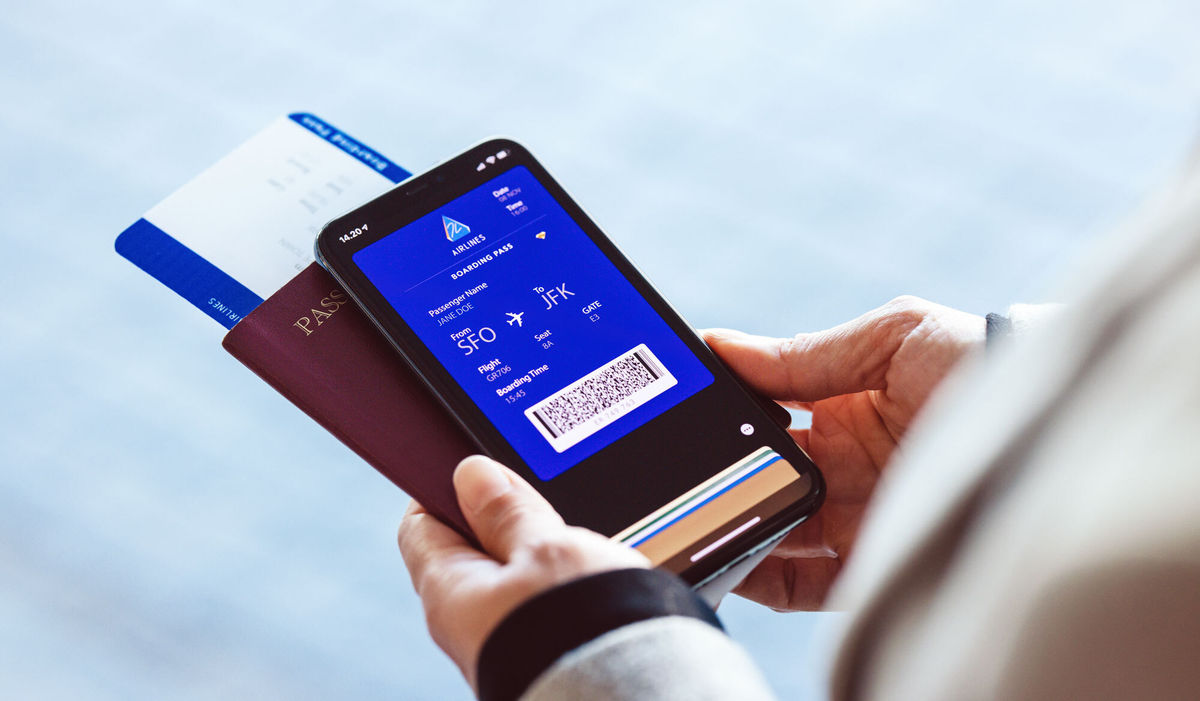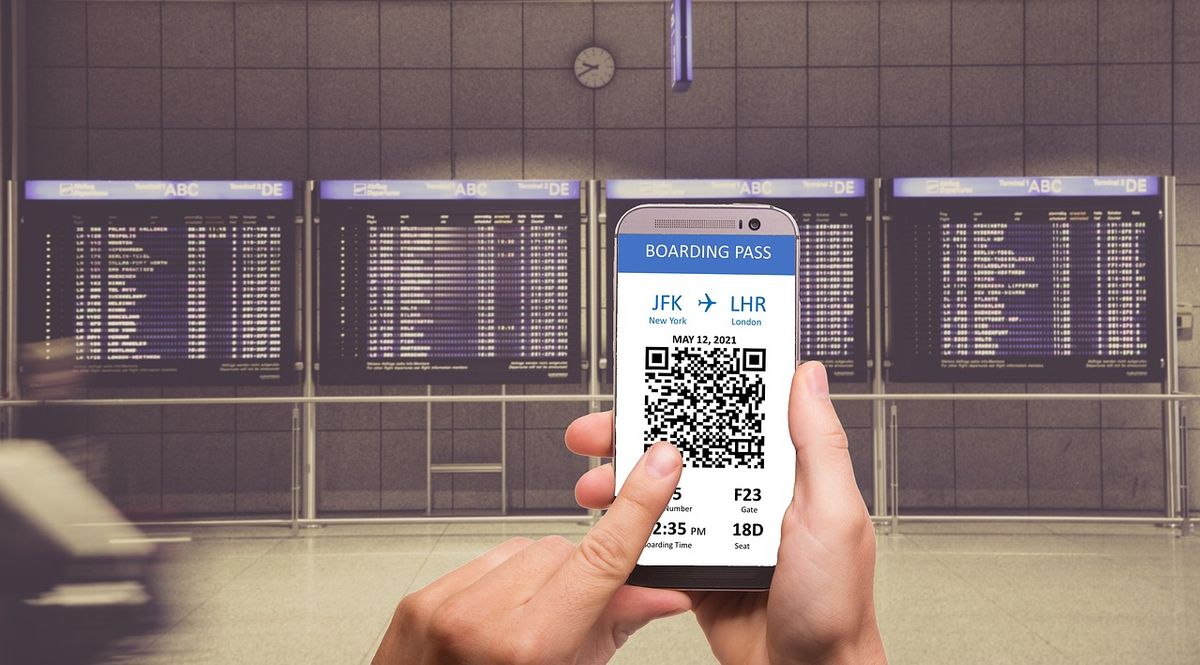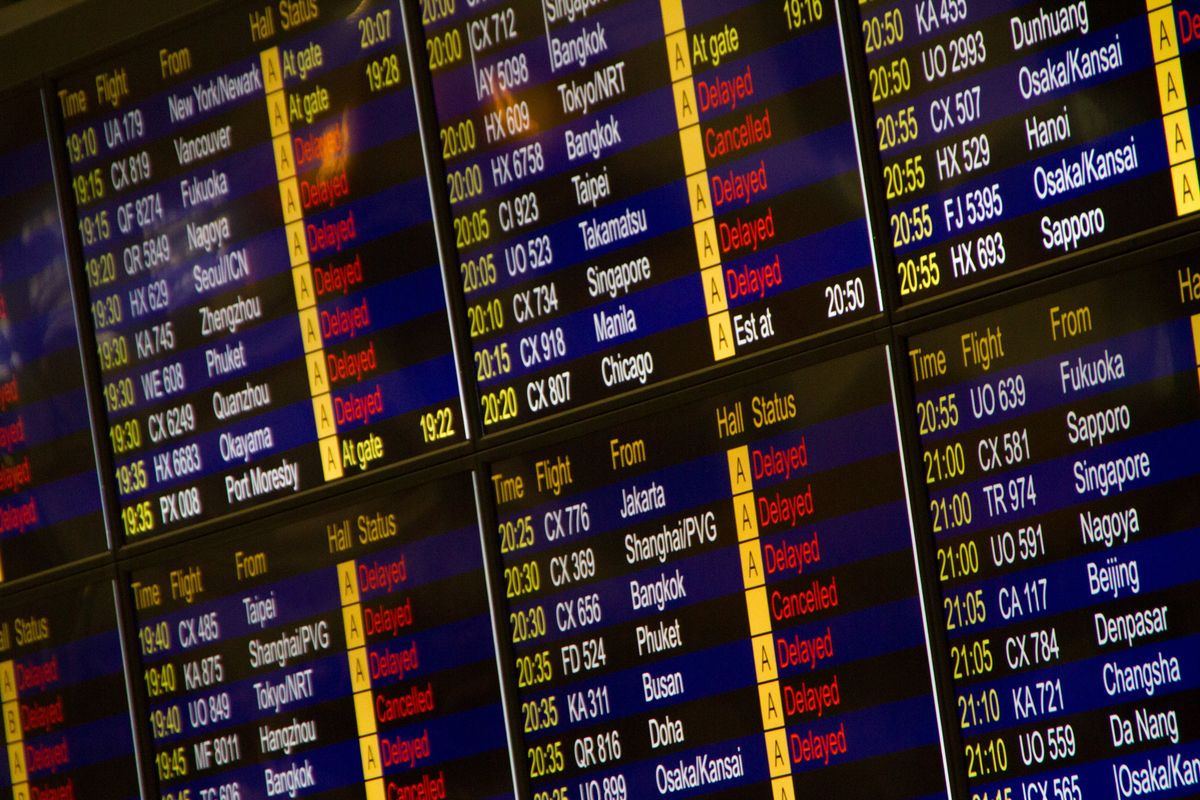
What’s a flight number? (And other important terms you need to know)
When your flight is delayed or canceled and you want to submit a claim for compensation, you’ll be asked to provide your flight details, such as your flight number, booking reference number, boarding pass, and a whole other bunch of confusing stuff.
But what do all of these terms even mean? Airline lingo can be pretty difficult to navigate, so we put together this handy guide to help you out.
What is an e-ticket?
The first document you’ll encounter when purchasing a flight is an e-ticket, which may also be called a flight confirmation, or booking confirmation. It lets the airlines know that you purchased a seat on a flight, and contains details such as your name, flight details, and seat assignment. Along with your e-ticket, you may also receive an e-ticket receipt to show that payment was successful. You can purchase e-tickets for a flight as far ahead as 1 year in advance.
It’s important to remember that an e-ticket is not the document you use when boarding the plane — that would be your boarding pass, which you’ll receive later upon check-in.
Where to find your e-ticket
E-tickets are emailed to you, so you should find them in your inbox. But if you’ve inadvertently deleted it, you can either search for it in your trash folder, or download it from the airline’s website or app. Alternatively, you can contact your airline’s customer service and ask them to send it to you.
E-tickets are nearly always digital, though there are some rare occasions where you have the option to get a paper ticket. Airlines may charge a printing fee.
Where to find your e-ticket number
Your e-ticket number consists of a unique string of 13 to 14 digits. This number is used in the airlines’ systems to identify your purchase. You can find your e-ticket number in your booking confirmation email, or on your e-ticket receipt. It may also appear on your airline or travel agency’s app or online booking portal.

A digital boarding pass. Image by Tumisu from Pixabay.
What is a boarding pass?
Once you’re ready to fly, you can start the check-in process and obtain your boarding pass. A boarding pass is a document that gives you authorization to board a plane on a particular flight.
It contains your name, flight details, seat number, and will often include your e-ticket number too. Boarding passes always have a scannable code that will allow you to pass through security and your gate when you arrive at the airport.
How to get your boarding pass
You get your boarding pass upon check-in.
Check-in time can vary depending on the airline — for online check-in, some airlines allow you to check in as early as 60 days before your flight, while the majority will only give you 23 to 48 hours before departure. A small number of airlines will require you to check in personally on the day itself. When you check in online, you'll receive your boarding pass via email or the airline app. They may also appear on your digital wallet, such as Google or Apple Wallet.
If you choose to check in on the day of your flight, you can get your boarding pass from the airline’s check-in counter, or at the self check-in kiosk at the airport. You will then receive a paper copy of your boarding pass.
What is a booking reference number?
A booking reference number is a unique alphanumeric code assigned to your travel reservation. Airlines use this code to identify the details of your specific booking and it also allows you to manage your travel reservation if you want to make changes to your trip. It’s crucial for checking in, making a claim in case of a flight disruption, or for when you need to contact the airline or travel agency with flight inquiries.
How does the booking reference number differ from the e-ticket number?
E-ticket numbers will always be used to track payments — it validates your reservation and that you’ve paid for a spot on a flight. On the other hand, the booking reference number is used to identify your entire travel reservation. It’s used to manage your flight details and itinerary.
What is a PNR number and how does it differ from the booking reference number?
PNR stands for Passenger Name Record, and it’s pretty much the exact same thing as a booking reference number. In fact, there are many names for the PNR number that vary between regions and even airlines. It can also be called a confirmation number, reservation code, reservation reference, reference number, record locator, locator code, or booking code.
Where do you find your PNR/booking reference number?
You can find the PNR number on your e-ticket, your booking confirmation email or SMS, and on your airline’s app or online booking portal. They’re usually labeled as “booking reference number” but be sure to check any combination of the names mentioned above.
PNR numbers are usually 6 characters long, though the length may vary between airlines. They are case sensitive and consist of a unique combination of numbers and letters, but may also include special characters. Your PNR could therefore look something like this: VY3UNX, HGX#NR, or even appear as fully numeric codes, such as 356282.

Flight departure board featuring time, flight numbers, departure location, and status. Photo by LT Chan on Pexels.
What is a flight number?
A flight number also appears as a unique alphanumeric code, this time assigned to a specific flight operated by an airline. It allows passengers, airline staff, and air traffic control to distinguish between different flights by identifying a specific route, departure time, and airline. If you have connecting flights or return flights on your booking, you'll notice that each aircraft you board has its own unique flight number.
Is the flight number the same as the booking reference?
Flight numbers and booking reference numbers can look really similar, as they are both alphanumeric codes featuring a string of letters and numbers. They can also be of a similar length as flight numbers are also often between 5 and 6 characters long.
The key difference is that flight numbers will always consist of two distinct parts: an airline code, followed by a numeric component. The airline codes never change. For example, American Airlines will always appear as “AA”, while British Airways will always be “BA”.
The airline code is then followed by 1 to 4 digits, which identify each unique flight.
Where can I find the flight number?
The easiest way to find your flight number is to look at your e-ticket, booking confirmation email, or boarding pass. The number will usually appear in the flight itinerary, where you can see your place of departure and arrival. So for example, if you have a departing flight with Lufthansa, it may appear as LH 191, while your return flight may appear as LH 199.
Flight numbers are not private data, so you can also find them on the airline and airport’s website, on airport display screens, or even on search engine results.
What is an airport code?
An airport code is a unique code used as a location identifier for airports. It’s used to differentiate between airports, as cities can have multiple airports nearby.
There are two types of airport codes — IATA (International Air Transport Association) and ICAO (International Civil Aviation Organization). But the one that’s important to travelers is the IATA code, as it’s the code that appears on flight websites, airports, and travel documents such as your boarding pass and airline luggage tags.
IATA codes always consist of 3 letters that roughly correspond to the name of the airport. For example, London Stansted Airport’s airport code is STN, while London Luton Airport is LTN.
Where can you find the airport code?
You will find the airport code on your e-ticket, boarding pass, and on flight information boards at the airport. It will also feature prominently on your luggage tag if you have check-in bags, as it tells you where the bag is headed.
What is a rerouting confirmation?
When your flight is canceled or overbooked and the airline offers you a replacement flight, you’ll get a rerouting confirmation. It’s basically a booking confirmation for your new flight, which will also come with a new boarding pass.
Where can you find your rerouting confirmation?
You will find it in your email or SMS when the airline puts you on an alternative flight.
So now you know!
As a passenger, knowing the difference between these numbers allows you to decode your travel documents — not only will it make it easier for you to manage your trip and navigate the check-in process at the airport, but it also comes in handy if your flight is disrupted and you need to file a claim for compensation.
You’ll encounter all of these terms when you claim with AirHelp. But even if you haven’t just learned about them in our little guide, our compensation check makes it easy to add all your flight details.
So check if your flight is eligible today — it’s quick, easy, and totally risk-free! Get started now.
85% of passengers don't know their rights. Don't be one of them.
AirHelp has been featured in:


